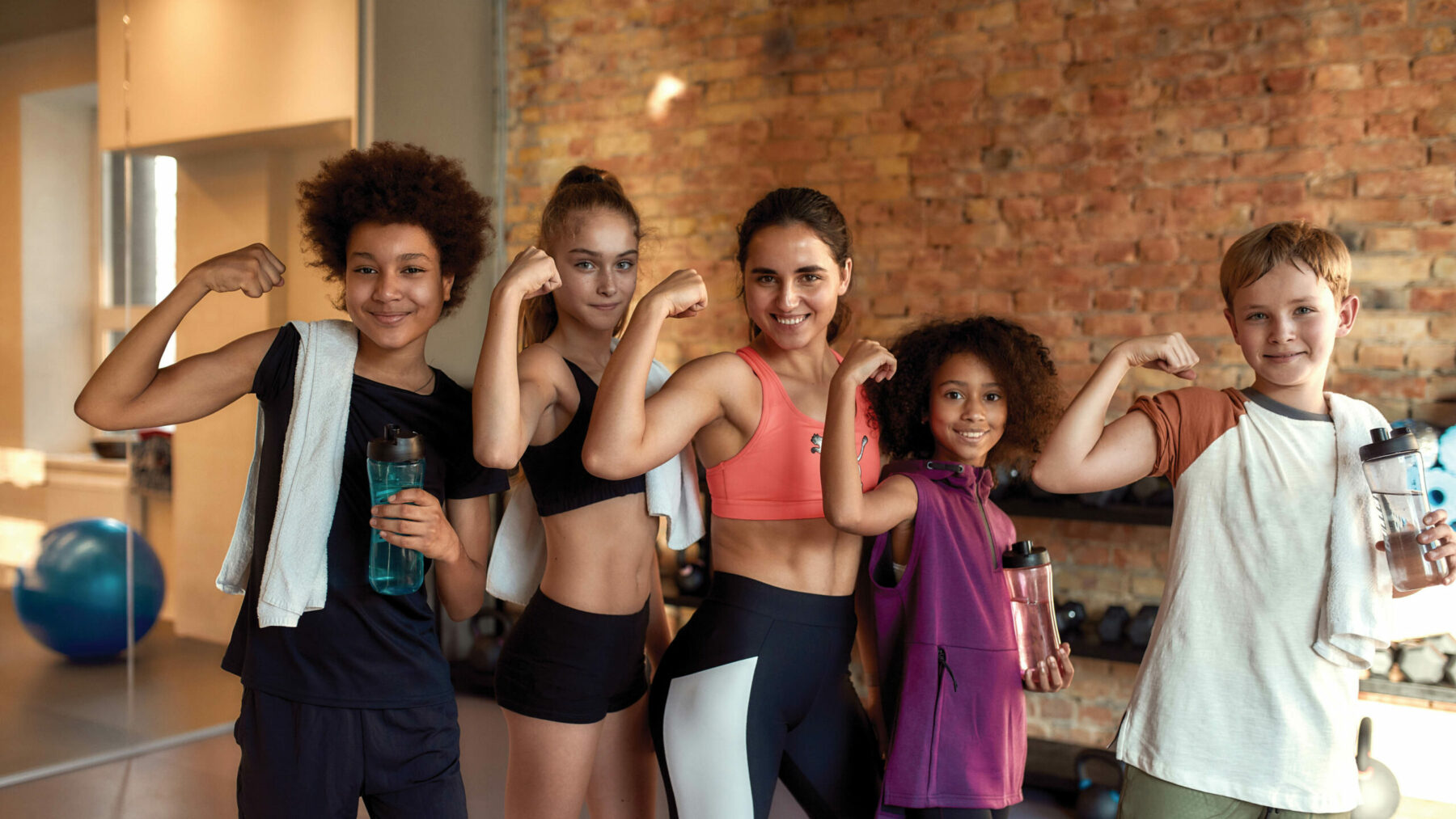Planet Fitness’ Summer Program Encourages Teens to Start Their Wellness Journey

Staying motivated throughout the summer months is difficult. Fortunately, for teens across the country, Planet Fitness is continuing their High School Summer Pass, which allows teens aged 14 to 19 to work out for free until August 31st in any Planet Fitness gym.
Chris Epper, the VP of Marketing for Excel Fitness Holdings at Planet Fitness, spoke on the mission of the program and what Planet Fitness is doing for teens across the country.
“Lots are struggling with mental health,” Epper says. “We shifted gears from our 2019 program, the Teen Summer Challenge, as a result of the statistics we found in teen fitness from the pandemic.”

Happy female trainer and positive children showing muscles while smiling at camera, standing in gym. Sport, healthy lifestyle, physical education concept. Horizontal shot
Epper and his team hope to make a positive impact through this program, especially to encourage teenagers — and their parents — to make a commitment to their physical and mental health.
Darla Castelli is a professor in the Department of Kinesiology and Health Education and the Director of the Kinetic Kidz Lab at the University of Texas at Austin. She emphasizes how healthy teenage living, including physical activity, can improve mental health.
“(Physical activity) changes one’s mood to a more positive disposition,” Castelli says. “(People are) able to navigate adversity just a little better.”
Castelli’s research focuses on how physical activity is linked to cognitive development. She says as teens enter the real world, especially with a wide range of age groups in a gym setting, they learn societal cues.
“You are building this bank of cognitive reserve that you can draw on in later life,” Castelli says. “The etiquette of the weight room (gets) a young person familiar with particular social norms.”
On the other hand, Leslee Feldman, a trainer at Castle Hill Fitness and the girls’ lacrosse coach at Bowie ISD, has a different approach to teens and physical activity. She claims that by incorporating dynamic warmups and drills, athletes are able to keep an interest in the sport.
“Every eight to 10 minutes, there has to be a new drill; otherwise, they lose interest,” Feldman says. “I also try to find out something about (my lacrosse girls) while they’re warming up. I ask them a bunch of questions — if they have animals, if they have siblings or if they’ve ever played other sports. I kind of use that as motivation.”
The discussion around fitness for teens becomes even more important with the emergence of childhood obesity, as it is a prevalent concern in the U.S. today. The CDC National Center for Health Statistics recently published a study showing that from 2017 to 2020, the prevalence of obesity among the ages of 2 to 19 was 19.7% in the United States. These numbers are incredibly important to address as obesity is continually impacting American children at younger ages, which affects their ability to become physically fit and healthy as they mature into their teen years. Castelli echoes this concern.
“Disengagement of children in physical activity is happening now around ages 8 to 10,” Castelli says. “Levels of obesity (are) clearly increasing at the pre-kindergarten age group.”
One obstacle for teens starting their fitness journey in the first place was most recently the pandemic. The closure of all public places hindered all Americans’ ability to get out and exercise in a gym. Castelli says this reversed the engagement of Americans’ intensity and regularity of engaging in physical fitness. She also mentions that the recent uptick of teens using e-cigarettes has played a role in decreased physical fitness.
From her experience coaching lacrosse, Feldman says the existence of eating disorders has posed an issue for many teens trying to pursue physical activity.
“Many of my athletes have experienced eating disorders or have so much going on that it’s difficult to maintain a level of fitness across the board,” Feldman says.
With programs like Planet Fitness’ High School Summer Pass, Castelli sees its benefits of being inclusive and equitable, with noticeable drawbacks. Even if the program cost one dollar, Castelli says people would make more of an investment in their wellness journey.
“The dropout rate is a little higher (in free programs),” Castelli says. “Whereas if the cost was $1 or $5, something where an individual has to make an investment, the likelihood that they will adhere to that physical activity program is a little bit higher.”
However, Castelli says offering free classes is still the best as it provides equal access to individuals who don’t have the financial means to work out at gyms. But there is still a potential risk that people will stop attending because they’re not losing money.
Overall, fitness is something teenagers can get serious about in a cost-effective and healthy way, especially in the summer. There are plenty of ways to continue being active throughout the summer months; you just have to find them and invest!






